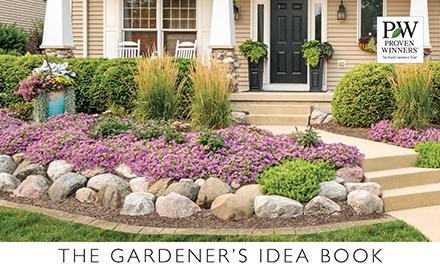5 Things to ...Look for on a Plant Label
This guide will help you make the best use possible of the information on the tags found with your plants in a garden center.
Beth Botts
ebotts@tribune.com
Chicago Tribune
Published May 7, 2006
It's the time of year when many of us have the impulse to rush out to the nursery, whether we have a single pot or acreage. Often we browse from one beautiful plant to the next, looking for something interesting. Plant tags and labels, with information on the plant's needs for light, soil and space, can help narrow selections, but they'll help even more if you pause for thought before leaving home, says John Heaten, owner of Knupper Nursery and Landscape in Palatine. Here are some of Heaton's tips for deciphering the label. Independent garden centers generally are more expensive than big-box home centers, but they usually offer more variety, more carefully chosen plants and better information.
1. Sun or shade: Plants make their food from sunlight and only some can tolerate lower light levels. Before you go shopping, observe how much sunlight reaches where you want to grow plants and for how long.
- "Full sun" means the plant needs six to eight hours of direct sunlight a day;
- "Shade" generally means three or four hours;
- "Part sun" and "partial shade" are gradations in between.
You may need to experiment with a few plants before you know just what classification the various parts of your growing space fall into.
2. Hardiness zone: Chicago's volatile winters are tough on plants.
For perennials, trees or shrubs that live from year to year, make sure the label says the plant is hardy to Zone 5 or lower. This means it has been tested and survived winters in the colder northern parts of the country.
For annuals, plants that bloom through one summer and then die, winter hardiness doesn't matter. Perennials or foliage plants from Zone 6 or higher may be grown as annuals, if you can afford to lose them after one season in the garden.
3. Spacing: Labels usually recommend how far apart plants should be spaced.
That generally depends on how wide the plants will be when they are mature.
But "to me," Heaton says, "spacing is a very personal question." It will cost you more money for more plants, but you often can place annuals and perennials closer than the label suggests. Trees and shrubs, on the other hand, should be carefully spaced and placed according to their labels, allowing for their eventual size; frequent mistakes are to plant them too close to the house or where they will eventually obstruct or break up sidewalks or interfere with power lines.
4. Botanical name: This tells you exactly what you are buying. There also may be a brand name or trademark name that is not part of the botanical name. For perennials, trees and shrubs, it's a good idea to hang onto tags and labels so you know what you have or if a problem comes up and you need to seek advice. For annuals, the precise botanical name isn't as important
-- unless there is a particular color in a particular brand of petunias or impatiens that you want to remember.
5. Price: Cheapest isn't always best. The more you know about the plant the better choice you can make. In general, a larger plant has been growing longer and has a better root system, which will enable it to make more leaves, flowers and perhaps fruit or vegetables.
- Annuals: Specialty annuals sold in 3- or 4-inch pots may not be different varieties from the ones sold in six-packs; often the difference in price simply reflects that they have been growing longer and have more roots.
- Perennials: First-year perennials in 2- or 4-inch pots can be less expensive, but probably won't bloom the first year. Second-year perennials in gallon containers usually will -- but bear in mind that if a July-flowering daylily has been forced so it is in bloom when you buy it in May, it won't bloom again in July.




